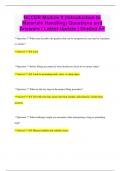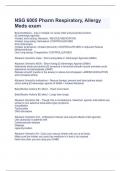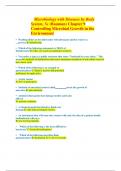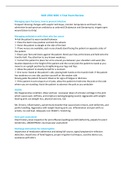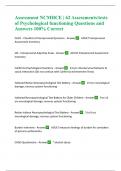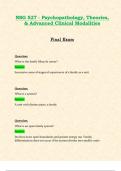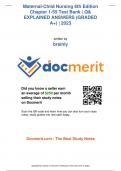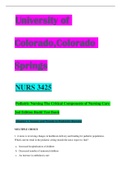Exam (elaborations)
Chapter 19: Thorax and Lungs Physical Examination and Health Assessment, 8th Edition by Carolyn Jarvis
- Course
- Institution
Physical Examination and Health Assessment, 8th Edition by Carolyn Jarvis MULTIPLE CHOICE 1. Which of these statements is true regarding the vertebra prominens? The vertebra prominens is: a. The spinous process of C7. b. Usually nonpalpable in most individuals. c. Opposite the interio...
[Show more]




